Affiliate links on Android Authority may earn us a commission. Learn more.
Sony Xperia E Dual Review
Published onMarch 11, 2013
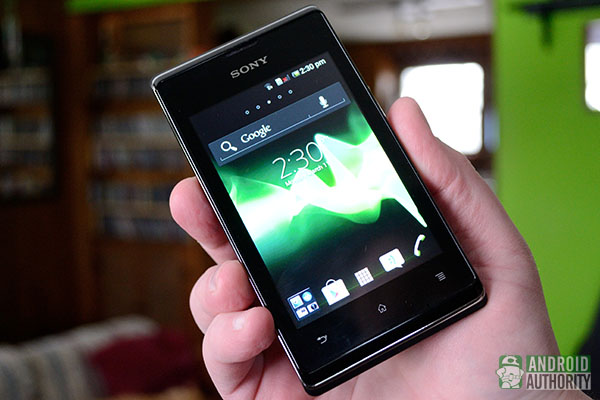
With all the hype surrounding Sony’s high-end phones like the Xperia Z, it’s easy to forget that the company is still making phones for the low-end market as well. Joining the low-end ranks most recently are the tag-team duo of the Sony Xperia E and the Sony Xperia E Dual. The two phones are nearly identical aside from the number of SIMs and the Android version they run. They also share one very important factor: a pretty low off-contract price.
In particular, the combination of low price and dual-SIM capabilities has the possibility to make the Sony Xperia E Dual very popular in certain parts of the world. That is, as long as it’s actually a decent phone. So, is it? Read on to find out.
In a hurry? Check out our video review or jump to the conclusion at the end of this article.
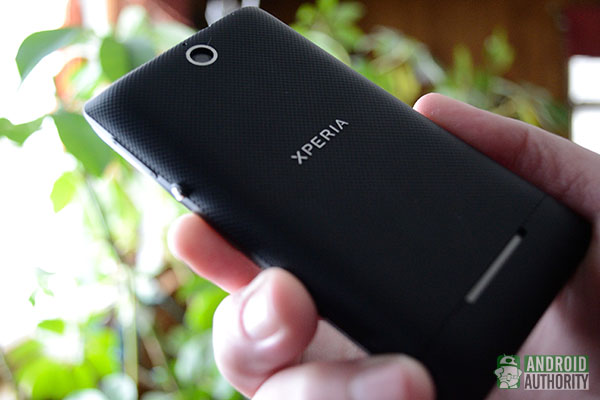
Specs
- 1 GHz single-core Qualcomm Snapdragon processor
- 3.5-inch HVGA display (480 x 320)
- 512 MB of RAM
- 4 GB internal storage
- microSD slot (up to 32 GB supported)
- 3.2-megapixel camera
- 1,500 mAh battery
- Android 4.0.4 Ice Cream Sandwich
Build Quality & Design
One of the nicer aspects of the Sony Xperia E Dual is its design. Even though it’s obviously lower on the totem pole than Sony’s high end devices, it doesn’t seem as though they skimped on the look and feel here. The glossy finish (black, in this case) and color-changing illumination bar certainly don’t broadcast the phone’s low-end nature.
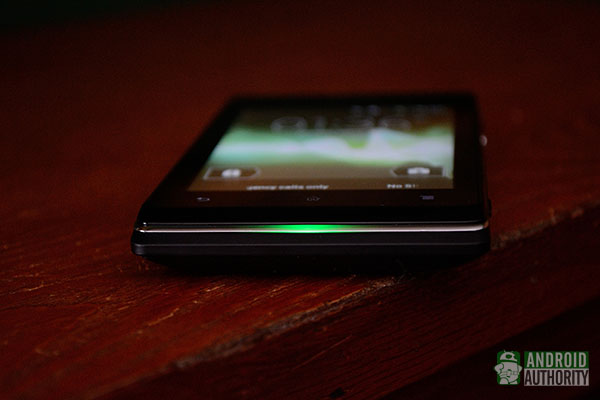
The phone feels well-built, though there is some flex present in the body. It fits well in the hand, though it has a chunky, short and squat feel to it. If the bezel was a little thinner or the device was a little taller, it would feel more “natural.”
One minor annoyance in the otherwise solid build is the haptic feedback. Whenever this occurs (which is often with the Xperia E Dual), a loud buzzing is present that sounds almost like something is loose inside the phone. This could be an issue that is only present in the unit we tested, but it’s worth mentioning.
Display
No surprises here: the display is clearly the weakest point of the Sony Xperia E Dual. No matter how you size it up, a 480 x 320 resolution and a pixel density around 165 ppi just isn’t too pleasant to look at.
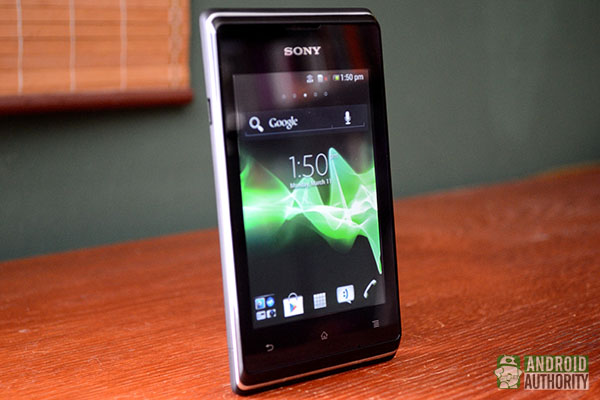
Pixelation is visible nearly everywhere and it’s odd, but tilting the top of the phone toward you at even a slight angle makes everything very hard to see. Meanwhile, you can tilt the phone in the other direction until you’re nearly looking at the bottom of it and you can still read what is on the screen. The screen is protected, but not with Gorilla Glass, so pressing down just a little to hard leads to visible distortion of the display.
Chances are if you’re looking at a dual-SIM phone in this price range, you’re already aware that you’re going to have to make some sacrifices, but if a quality display is important to you, you may want to look elsewhere.
Performance
With a look at the processor and RAM, it’s clear that this device isn’t going to be a top performer, but that doesn’t mean that it can’t handle a fairly good amount of what you throw at it. Some light stuttering is somethings visible when scrolling through the home screen or app drawer, but this tends to happen when a lot of things are running in the background. Apps still launch quickly and while this phone isn’t going to run the most demanding games, the Xperia E Dual can keep up with quite a few.
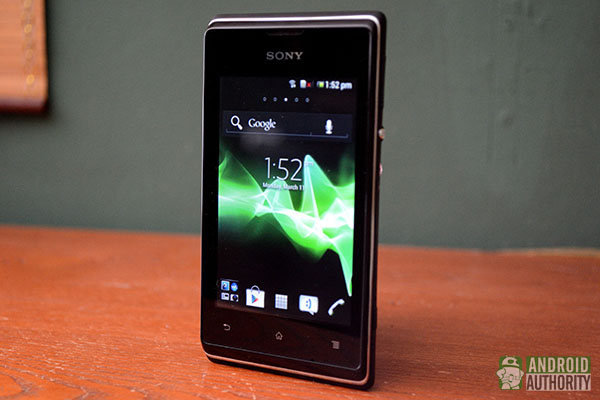
Interested in how the modest hardware would compare to other devices, I ran a few benchmarks. The first was AnTuTu. I ran the benchmark five times and ended up with an average score of 5468. Next was Vellamo which produced an average of 1070 in its HTML5 test and 314 in its Metal test. Epic Citadel surprised me a little, producing an average FPS of 29.5 in High Performance mode and 29 in High Quality mode. Then again, it was only pushing a grand total of 153600 pixels.
Software
Unlike its single-SIM sibling, which runs Jelly Bean, the Sony Xperia E Dual runs Android 4.0.4 Ice Cream Sandwich. There has been some word that an update to Jelly Bean is on the way, but I haven’t found anything confirming this by Sony. Sony has skinned the interface with a themeable overlay which looks fairly nice, but I can’t help but wonder how it impacts performance.
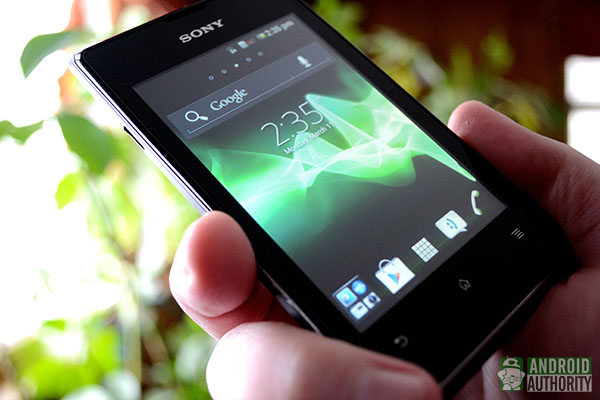
Aside from the usual Google apps, Sony has included quite a few of its own, including its Walkman app, TrackID and Smart Connect, which will put the phone in different modes depending on if you plug in the headphones or plug the charger in, for example. Other apps include OfficeSuite, Facebook and NeoReader, which scans QR codes and barcodes.
Camera
The 3.2-megapixel camera is nothing to write home about. In its default mode, even pictures taken on a bright, sunny day looked dark and drab. Artifacts were very noticeable in areas that quickly contrasted light and dark, and visual noise was present even in the brightest areas of images. The camera is useful for taking a quick picture when you have nothing else on hand, but don’t expect the highest quality. Self-portraits are out as well, since the Sony Xperia E Dual has no front-facing camera, which is understandable at this price.

Though video functionality is built in, don’t expect to use it too often as the resolution caps out at 640 x 480. If you really need to grab something in motion, its okay, but viewing it later on anything other than the phone itself isn’t going to be very enjoyable.
Battery
Despite the battery’s meager capacity of 1,500 mAh, the battery life is better than you might think. Sony estimates a talk time of just around 6 hours, And I got just over that while doing some fairly heavy benchmarking and testing. In real world use, it’s going to be relatively easy to go a full day without a charge, though having both SIM slots full may run your battery down a bit faster.
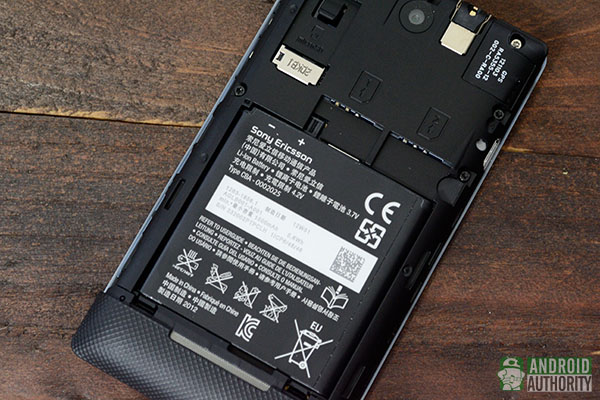
The battery is removable and replaceable, so it’s possible to carry another charged battery with you, use an extended battery, or both.
Conclusion
More than a lot of devices on the market right now, the Sony Xperia E Dual is a good choice for someone who uses their device first and foremost as a phone, with other functionality running a distant second. Despite its low-end specs, the phone is quite capable, but there are many better choices if you only need a single SIM.
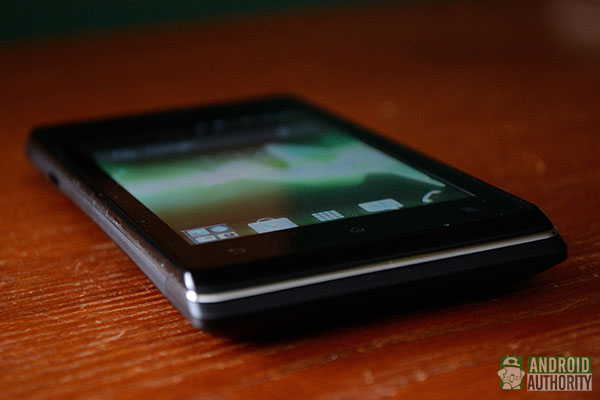
That said, this is hands down one of the most affordable dual-SIM phones on the market, and that alone makes it worthy of a recommendation for the right person. The Xperia E Dual can be found for around $200 U.S. dollars contract-free, so it’s going to be very difficult to find another dual-SIM option at this price.
Have you used the Sony Xperia E Dual? Have any thoughts? We’d love to hear them in the comments below.